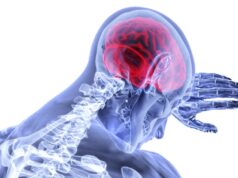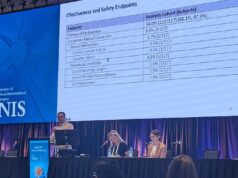
A new study has demonstrated a therapeutic advantage for a unique and innovative capability of the Boston Scientific Vercise deep brain stimulation system for the treatment of Parkinson’s disease. The CUSTOM-DBS clinical study demonstrated that shorter stimulation pulses may offer a clinical advantage over deep brain stimulation therapy using conventional pulses. The Vercise deep brain stimulation system is the only commercially available platform with the capability to generate stimulation pulses at the shorter pulse width settings.
Results of the CUSTOM-DBS study were presented at the 18th International Congress of Parkinson’s Disease and Movement Disorders in Stockholm, Sweden, by Jens Volkmann, professor of Neurology at Universitatsklinikum, in Wurzburg, Germany and primary principal investigator of the trial. The Boston Scientific CUSTOM-DBS study is a randomised, multicentre, double-blind trial evaluating clinical advantages of the Vercise deep brain stimulation system for patients with Parkinson’s disease. Fifteen patients previously implanted with the Boston Scientific Vercise deep brain stimulation system were programmed and assessed using test and control pulse widths.
The study demonstrated that deep brain stimulation with shorter pulses results in larger therapeutic windows that may be advantageous for avoiding stimulation-related side effects. The therapeutic window is the range of electrical currents that provides effective therapy without causing side effects.
In CUSTOM-DBS, patients’ deep brain stimulation implants were stimulated with brief electrical pulses that were shorter than conventional settings. To compare the two settings, efficacy of the stimulation was evaluated using the standard UPDRS III score assessment for Parkinson’s disease, and thresholds for achieving efficacy and side effects were measured. The comparisons were randomised and double-blinded, making this one of the first studies to provide Level I evidence of a clinical advantage to specific deep brain stimulation settings, such as shorter pulse widths.
“The results are truly exciting because the key to optimal deep brain stimulation treatment is first to get accurate targeting and then find an electrode with a large therapeutic window, where a patient is getting the best management of Parkinson’s disease symptoms with minimal side effects,” says Volkmann. “The shorter pulse width settings with the Vercise system required less electrical energy to achieve optimal therapy, suggesting there may also be energy efficiency advantages to these settings as well.”
The Vercise system has both CE mark approval and TGA (Australia Therapeutic Goods Administration) approval and is available for sale in Europe, Israel, Australia and select countries in Latin America for Parkinson’s disease, and CE mark approval for intractable primary and secondary dystonia.
In the USA, the Vercise system is investigational and not available for use or sale. The INTREPID clinical trial began enrolment in the USA in mid-2013 to evaluate the safety and effectiveness of the Vercise system for the treatment of Parkinson’s disease.









